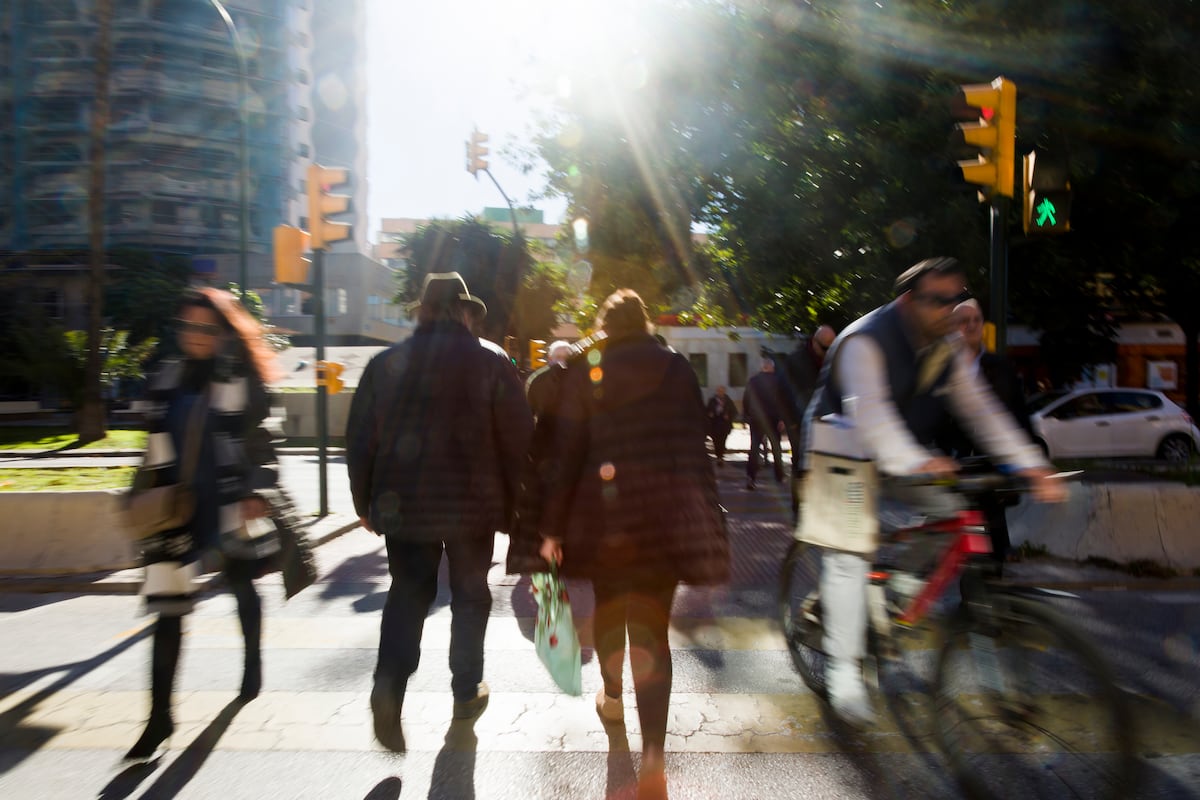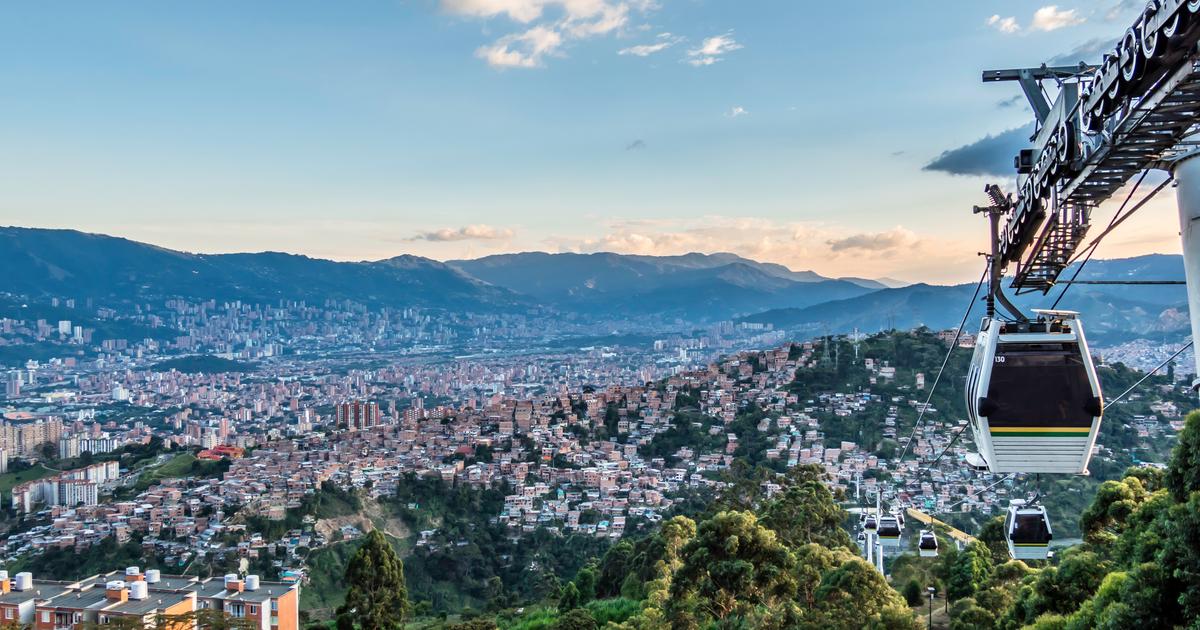Blurred landscape of a city with walking people.Freepik
Detoxify
is the key word in the current process of transformation of cities.
Some do it slowly, others faster, for public health reasons or because cars and tourists get too bothered.
Some lead the advance, others started timidly.
Many try to improve their accident rates, to improve the air they breathe, or to offer children a more inclusive, educational and playful common space.
Whichever path they take, the cities, at least the majority, want to
detoxify.
This can be seen in the annual congresses of the Network of Walking Cities, where the kaleidoscope of Spanish urban evolution is reflected, whose cities tend to promote the typical environmental values of southern European towns.
They tend to be compact, with clear central nuclei surrounded by neighborhoods with a high social personality, and with a high presence of journeys on foot in relation to the private car —consumer of energy resources, air polluter, threat to urban tranquility and occupant of the scarce public space in cities.
The urban environment —the one that we should take much more care of, because humans spend a good part of our lives in it— is eager to clean up some of its impurities.
And, although it is difficult for him, he moves slowly.
But the cities shout their desire for change, not always supported by the most central instances, which could help much more in this transformation, elaborating effective laws to support the transition.
It seems as if the central ministries issued their dictates from the clouds of Uranus, instead of feeling the reality on which they reflect in the BOE.
This is the case of the Low Emission Zones, whose specific legislation is still pending approval.
What is known so far does not fully convince cities or organizations.
The great opportunity that the obligation to restrict traffic in metropolises with more than 50,000 inhabitants would entail is blurred, such as its application based on the environmental labels of vehicles.
The tiles are changed, but not the board or the rules of the game.
The state regulatory framework is not a brake for many cities that are taking courageous measures in the face of public opinion, often little aware of the real need that exists to make cities more humane, more designed for people and less for cars
Knowing the need to "purify" the urban environment, they identified the problem exclusively with the smoke from cars, and they only considered ending it.
They preferred to silence any reference to other types of issues of high public interest, such as the excessive space that we allocate to motorized mobility, the growing dose of urban road accidents, the stress induced by driving in cities, the loss of children's autonomy, or the widespread non-compliance with universal accessibility regulations.
To solve it, they took the experiences of Central Madrid and the Metropolitan Area of Barcelona as a common thread.
Both had tried, previously, timid approaches to the discrimination between cars, and privileged the new ones over the old ones and the expensive ones over the cheap ones, but they did not imply either success stories or transformative formulas, since both are, with a broad brush, examples of a highly
cochified
mobility .
Traffic jam at the exit of the A2, the Barcelona highway, in the exit direction, on December 2, in Madrid.
Kiko Huesca (EFE)
Faced with this situation, many municipalities feel helpless.
They fight to reduce the number of cars and the Government tells them to allow the wealthiest citizens to continue going for bread in their vehicles, or taking their children to the school gate, 300 meters from home, while the others do so. they will be prohibited.
Going on foot will continue to be for the poor.
However, the state regulatory framework is not a brake for many cities that are taking courageous measures in the face of public opinion, which is often little aware of the real need to make cities more designed for people.
This was palpable in the last Congress of the Network of Walking Cities, in Palma de Mallorca.
Here numerous conquests achieved in urban spaces such as Maó, Valencia, Pontevedra, A Coruña, Valladolid, Palma, Vilagarcía de Arousa (Pontevedra), Tomiño (Pontevedra) or Estepona (Málaga) were displayed.
Each one went at their own pace, with their circumstances, their ways of doing things, their priorities and their contributions, towards a debate that seeks solutions to a greater role for people and less abuse of the car in the city.
The awards given to Tomiño, Vilagarcía de Arousa, A Coruña and Estepona are recognition of this political commitment.
The first three, coincidentally Galician, were highlighted by an independent jury thanks to their irrefutable recovery of public space for people and for making this the flag of their urban model.
The city of Estepona, in the province of Malaga and an extraordinary prize, obtained a special mention for the Network, since it turned its main avenue, with four lanes for vehicles, into a generous promenade on the shores of the Mediterranean.
But the congress was not only used for that.
We also analyze what Spanish and Portuguese cities can do together to improve our public space.
We make an effort to see the human dimension of the most advanced technology applied to mobility and we share the vision of pedestrian defense organisations, which joined their voices to ours to achieve more pleasant spaces for life.
In addition, it was the framework chosen for the presentation of the first three explanatory posters of the
La ciudad desirada series
,
with which it is intended to transmit clear and precise ideas to help the urban evolution that we pursue.
The next congress will be in 2023, in Valladolid.
We look forward to this new meeting to reinforce and promote the work of cities that want to be more humane, more sustainable and more inclusive.
Ana Montalbán
is the technical director of the Walking Cities Network.
You can follow PLANETA FUTURO on
,
and
, and subscribe
here
to our 'newsletter'
.









